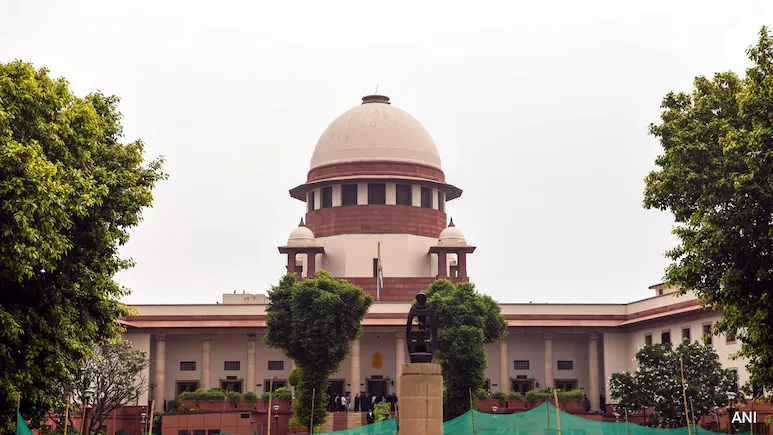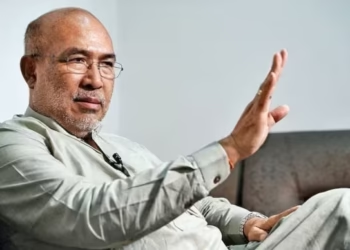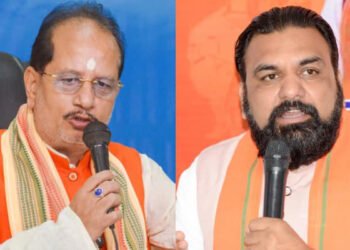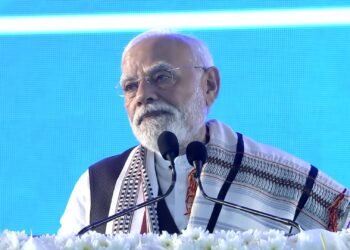Justice K V Viswanathan has emerged as the wealthiest among the Supreme Court judges, declaring investments worth over ₹120 crore and cumulative earnings of ₹91.47 crore over 15 years.
BY Navin Upadhyay
New Delhi | May 5, 2025 — In a landmark move aimed at bolstering transparency and public trust, the Supreme Court of India has begun publishing the financial declarations of its judges and detailed records of judicial appointments on its official website. The twin disclosures, announced following a full-court resolution on April 1, 2025, are being widely seen as a significant step toward greater institutional accountability.
So far, 21 of the 33 sitting judges have submitted their asset declarations, offering the public an unprecedented look into the personal wealth, investments, and liabilities of India’s top judiciary. Simultaneously, the apex court has also published comprehensive data on appointments made to High Courts and the Supreme Court between November 9, 2022, and May 5, 2025.
Based on the asset declarations, Justice K V Viswanathan has emerged as the wealthiest among his peers. His disclosed assets include investments exceeding ₹120 crore, making him the top asset holder in the apex court. Justice Viswanathan also owns properties in Delhi and Coimbatore, and his income tax returns from 2010–11 to 2024–25 show cumulative earnings of over ₹91.47 crore. His financial portfolio significantly surpasses that of other judges, offering a rare glimpse into the personal wealth of a sitting Supreme Court justice.
Chief Justice Sanjiv Khanna, who currently heads the apex court, has disclosed ownership of four properties: a 3BHK DDA flat in South Delhi, a 4BHK apartment in the Commonwealth Games Village, a 56% share in a 4BHK flat in Gurugram, and ancestral property in Dalhousie, Himachal Pradesh. His financial holdings include ₹55.75 lakh in fixed deposits and bank accounts, a PPF of ₹1.06 crore, GPF of ₹1.77 crore, a LIC policy, and minor equity holdings. He has declared no liabilities.
Post disclosure of assets by Supreme Court judges there is a lot of excitement about Justice KV Viswanathan’s tax returns. 17 crores tax paid in one year! Well KVV, as he was known at the Bar, was at his peak when he was asked to accept judgeship and in the truest tradition of… pic.twitter.com/mOzNWsdNR0
— sanjoy ghose (@advsanjoy) May 6, 2025
MUST READ: Audio labs work in days, so why months for Biren Singh tape?
Meanwhile, Justice B R Gavai, who is set to assume the role of Chief Justice of India on May 14, has declared gold jewellery worth ₹5.25 lakh (his) and ₹29.70 lakh (his spouse’s). He also holds ₹24.33 lakh in rent and security deposits, but unlike his predecessor, he has reported liabilities amounting to ₹1.075 crore under a Hindu Undivided Family (HUF).
Asset Declarations: A First for the Supreme Court
The official resolution stated:
“The full court of the Supreme Court of India has on April 1, 2025 decided that the statements of assets of the judges of this court shall be placed in the public domain by uploading the same on the website of this court. Statements of assets of judges already received are being uploaded. Statements of other judges will be uploaded as and when the current statement is received.”
Fantastic! This is a major advance in the transparency of Judicial appointments. Hope this will be an enduring practice which will not change in future. A huge thank you to the CJI & the SC for this https://t.co/rS7uexG1uW
— Prashant Bhushan (@pbhushan1) May 6, 2025
Among the notable disclosures:
- Justice K V Viswanathan declared investments worth over ₹120 crore, with properties in Delhi and Coimbatore. His income tax filings from 2010–11 to 2024–25 reveal earnings exceeding ₹91.47 crore.
- Justice Vikram Nath, who tops the list in terms of declared movable assets, owns a 2BHK flat in Noida, a bungalow in Prayagraj, and 20 bighas of agricultural land in Kaushambi. He and his spouse have investments worth ₹4.75 crore, including 1 kg of gold, 1.5 kg of silver, and a Volkswagen Polo.
- Justice J B Pardiwala has disclosed mutual fund holdings over ₹4.4 crore, along with a residential property in Ahmedabad, an ancestral farmhouse in Valsad, and agricultural land in Sanand.
- Justice Surya Kant, who is set to become Chief Justice of India on November 24, declared fixed deposits worth ₹4.11 crore, and properties in Chandigarh, Panchkula, Gurugram, and Delhi.
- Outgoing Chief Justice Sanjiv Khanna, who currently heads the Supreme Court, declared four properties, including:
- A 3BHK DDA flat in South Delhi
- A 4BHK apartment in the Commonwealth Games Village
- A 56% share in a 4BHK flat in Gurugram
- A share in ancestral property in Dalhousie, Himachal Pradesh
His financial holdings include:
-
- Fixed Deposits and bank accounts totaling ₹55.75 lakh
- Public Provident Fund (₹1.06 crore)
- General Provident Fund (₹1.77 crore)
- LIC policy and minor shareholding of ₹14,000
- No liabilities declared
- Justice B R Gavai, who will assume the role of CJI on May 14, reported:
- Gold jewellery worth ₹5.25 lakh (his) and ₹29.70 lakh (his spouse’s)
- Rent/security advances totaling ₹24.33 lakh
- Liabilities of ₹1.075 crore under Hindu Undivided Family (HUF)
- Justice Abhay S Oka disclosed significant investments in PPF, fixed deposits, LIC policies, mutual funds, and gold jewellery, along with a car loan of ₹5.11 lakh.
- Justice Bela M Trivedi owns two houses in Ahmedabad and jewellery worth ₹50 lakh.
- Justice Pankaj Mithal declared a recently purchased flat worth ₹1.67 crore in Greater Noida, along with investments in mutual funds and bonds.
- Justice Sanjay Karol holds a diverse real estate portfolio, including ancestral and self-acquired properties across Himachal Pradesh, Delhi, and Haryana.
ALSO READ: A UK Scholar’s Perspective on the Manipur Crisis: The Legacy of Land, Lies, and Exclusion
Judicial Appointments: Process Details Now Public
In another unprecedented move, the Supreme Court has uploaded the complete details of judicial appointments, including the Collegium’s recommendations and inputs received from the state governments, the Union of India, and the High Court Collegiums.
The published data includes:
- Names and High Courts of appointees
- Whether appointed from the Bar or judicial service
- Date of Collegium recommendation
- Date of Department of Justice notification and final appointment
- Category tags (SC/ST/OBC/Minority/Woman)
- Disclosure of familial ties to sitting or retired judges
This transparency initiative applies to appointments made between November 9, 2022 and May 5, 2025 and is expected to continue moving forward.
A New Chapter for Judicial Openness
These reforms come amid rising public interest in the judiciary’s internal workings and growing calls for transparency in the Collegium system, which has often been criticized for its opacity.
Legal experts have welcomed the disclosures as “a bold and overdue step,” while also calling for similar practices to be extended to High Courts and made periodic and mandatory.
By lifting the veil on both personal financial interests and institutional decision-making, the Supreme Court has taken a proactive step in reinforcing public confidence, setting what many hope will become a lasting precedent.













